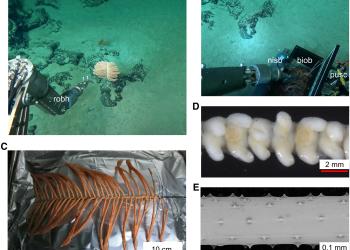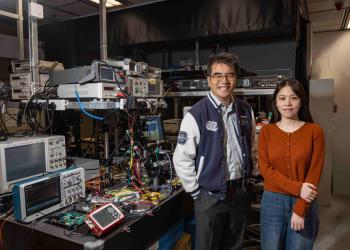HKUST Finds a New Material System that Opens a New Era for Organic Solar Cells
Researchers at The Hong Kong University of Science and Technology (HKUST) have discovered a novel material system that would revolutionize the future development of Organic Solar Cells (OSCs). OSCs based on this new material system have demonstrated ultrafast and efficient charge separation despite a nearly zero charge separation driving force, meaning that the more environmentally-friendly OSCs may be able to perform as good as inorganic solar cells in the future.
The breakthrough, discovered by a research team led by Prof. Henry He Yan from the Department of Chemistry, was published in Nature Energy in June.
OSC is a promising third-generation solar technology. However, its charge separation – an essential step for solar cells to generate electricity, required a significant driving force - typically 0.3 eV or higher, which had been a fundamental limitation for OSC’s development as the driving force inevitably causes a large voltage loss in OSC and limits its maximum achievable efficiency.
Now Prof Yan’s group may have found a solution for this problem which researchers have sought to tackle over the past two decades. In collaboration with Prof Feng Gao at Linkoping University, Sweden, and Prof Kenan Gundogdu at North Carolina State University, USA, the group demonstrated an ultrafast charge separation in their OSC built on a new material system, which occurred in a time-scale of between 0.1 to 3 picosecond, despite a near-zero driving force.
This breakthrough is set to remap the future of OSC. Currently, the best-performing OSC only has an efficiency of between 12 and 13 per cent, but with the required driving force reduced to near zero, its maximum efficiency could increase to between 20 – 25 per cent, a level comparable to the most advanced inorganic solar cells nowadays. The finding has prompted questions on how charge transfer and recombination occur in OSCs, it may also spark a new wave of studies on the photophysics processes in organic semiconductor materials.
This is the third major achievement by Prof Yan’s group over the past two years (with the previous two published at Nature Comm., 2014, 5293 and Nature Energy, 2016, 15027). In 2014, the group identified a new method to expedite the development of OSC materials. That method eventually led to the creation of a record-efficient OSC developed via environmentally-friendly processing method in early 2016. But Prof Yan said the team’s latest achievement is even more important than the previous two. “We now have reasons to be very optimistic about the future of OSC, as our finding completely redefines OSC’s maximum potential in both fundamental studies and industrial applications,” he said. “We hope to set up a major research platform on this very exciting and rapidly-developing front with the help from colleagues of the chemistry, physics and energy field.”
Prof Yan graduated from Peking University and obtained his PhD at Northwestern University in 2004. Before joining HKUST in 2012, he led a research group at Polyera Corporation – a leading company in the organic electronics industry.
For media enquiries, please contact:
Sherry No
Tel: 2358 6317











